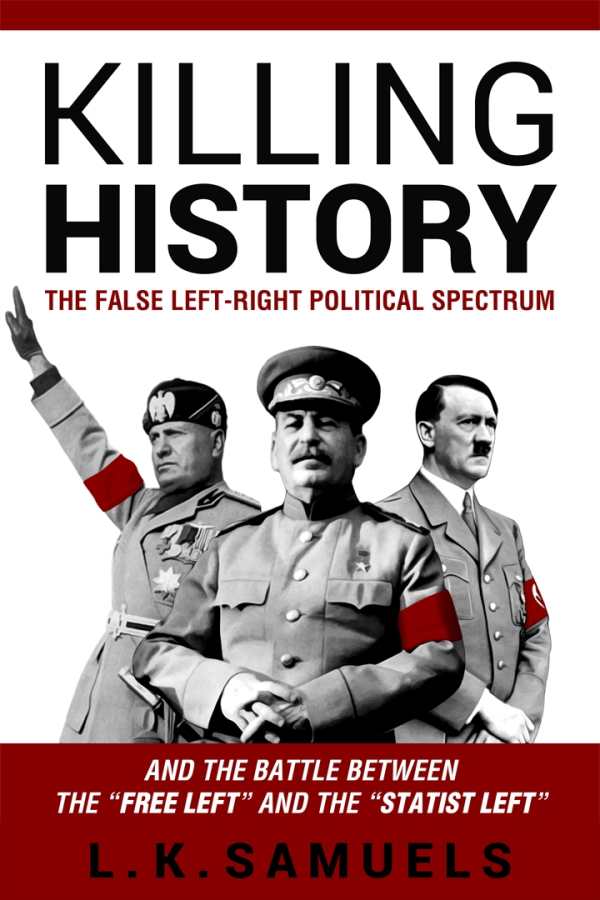Killing History
The False Left-Right Political Spectrum and the Battle between the 'free Left' and 'statist Left'
As an examination of twentieth-century history, this book does an excellent job of rewriting accepted myths.
A nonobjective paean to liberalism, L. K. Samuels’s political history text Killing History is also a much-needed corrective to the left-right binary.
Elephantine and well-researched, the text investigates authoritarianism from Soviet communism to Italian fascism and German national socialism, drawing an important distinction between the latter two, which are commonly but wrongfully seen as identical. Written in a clean and clear style, the text makes a case that the truest political philosophy is one that distinguishes between what it calls the forces of authoritarianism and the forces of liberty. Chapters focus on major concepts of political philosophy, with sections dedicated to examining three ideologies: communism, fascism, and Nazism.
The book makes a clear argument that left-wing leaders like Joseph Stalin and Mao and right-wing leaders like Benito Mussolini and Adolf Hitler shared much in common. It supports its assertion that Mussolini and Hitler both considered themselves men of the authoritarian left well, recalling how both spent their early years as members of socialist and communist movements.
The ideas presented here are not original, and the book’s conclusions are common among adherents of libertarianism. Repetition is an issue. Attempting to correct what it considers eighty years of bad historiography, the book renders the histories of classical and contemporary liberalism, the French Revolution, and the American Revolution in too shallow a way. Ayn Rand, F. A. Hayek, and other figures of libertarianism are upheld, along with their definitions of “collectivism” and “coercion,” and the book’s own biases are revealed. Criticisms of classical liberalism are not engaged, and the book’s otherwise devastating critique of the perceived left-right axis is weakened as a result.
As an examination of twentieth-century history, this book does an excellent job of rewriting accepted myths. Stalin, Mussolini, and Hitler, despite their outward differences, are shown to have all been Jacobins who hated monarchy, feudal bonds, and decentralized power. The book also notes that all three were antagonistic to Christianity, and while Mussolini often invoked the Roman Empire, he, Hitler, and Stalin are positioned as abject modernists, more interested in destruction than cultural preservation.
Best approached as a political reference text, the book is built on deep research, and its iconoclasm is exceptional. Still, its audience should expect its bias towards laissez-faire capitalism and classical liberalism. Killing History gets totalitarianism right, but is still a myopic work.
Reviewed by
Benjamin Welton
Disclosure: This article is not an endorsement, but a review. The publisher of this book provided free copies of the book and paid a small fee to have their book reviewed by a professional reviewer. Foreword Reviews and Clarion Reviews make no guarantee that the publisher will receive a positive review. Foreword Magazine, Inc. is disclosing this in accordance with the Federal Trade Commission’s 16 CFR, Part 255.

